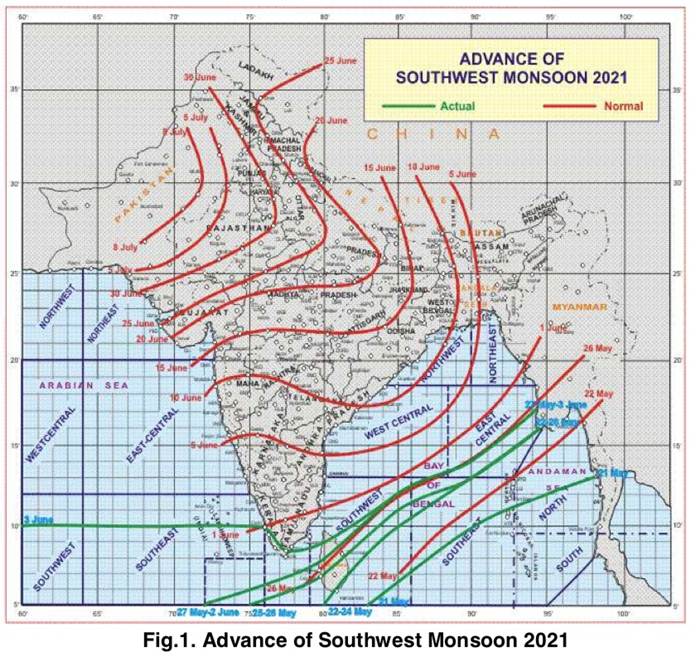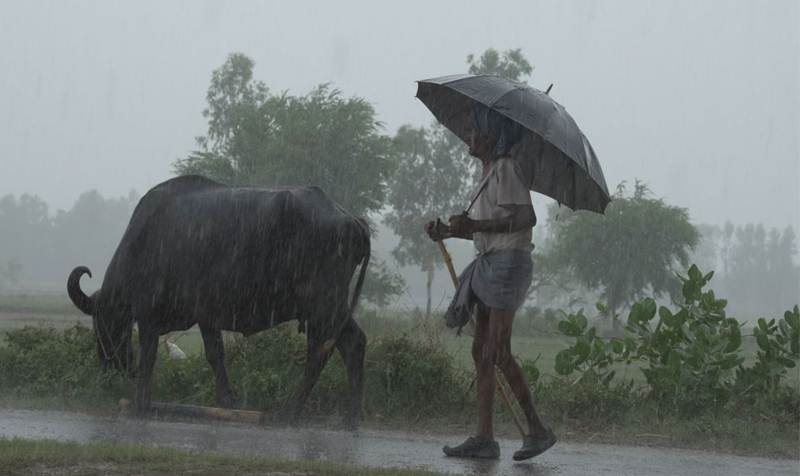Explained: How Yaas and Tauktae cyclones delayed the onset of monsoon
Against the normal date of June 1, the southwest monsoon has set over Kerala on June 3. Scientists and weather experts reason as to how the two recent cyclones — Tauktae and Yaas — had a role to play in the late arrival. Is climate change to be blamed too? More details here.


Rising carbon emissions, warming of the oceans and climate change is leading to the formation of more intense tropical storms.
Late by about two days, the southwest monsoon set over the southern parts of Kerala on June 3, as announced by the India Meteorological Department (IMD). The onset was earlier supposed to be on June 1, but the date was revised by the IMD and pushed to June 3.
This delay in the onset of monsoon is not expected to adversely affect the overall monsoon performance, which, as per the IMD’s long range forecast of the monsoon issued on June 1, is “most likely to be normal (96 to 104 % of Long Period Average (LPA))”.
Also Read: Capricious weather events leave an indelible mark on coronavirus-hit 2020
Quantitatively, the monsoon seasonal (June to September) rainfall over the country as a whole is likely to be 101 per cent of the LPA with a model error of plus or minus 4 per cent. Meanwhile, the southwest monsoon seasonal rainfall over the four homogeneous regions is most likely to be ‘Normal’ over northwest India (92-108 per cent) and South Peninsula (93-107 per cent). Seasonal rainfall is most likely to be ‘below normal’ over northeast India ( less than 95 per cent) and ‘above normal’ over central India ( more than 106 per cent).

Scientists and weather experts believe that the late arrival of southwest monsoon this year is linked with the two cyclones, Yaas and Tauktae, that hit the eastern and the western coasts of India within a week last month.
Also Read: Two days late, southwest monsoon sets in over Kerala, ‘yellow alert’ sounded in eight districts
Effect of Cyclone Yaas and Tauktae on the onset of monsoon
According to Sushant Puranik from University of Pune’s Department of Atmospheric and Space Science, Cyclone Yaas coincided with the timing of the monsoon’s arrival and it had a greater role to play in the latter’s delayed onset.
Due to the formation of Cyclone Yaas, the energy and the moisture was diverted towards it. “As a result, eastern arm of the monsoon that passes through the Bay of Bengal became more powerful, while the western arm that moves through Arabian Sea became weak,” Purnaik explained.
“For the onset of the monsoon, western arm must be stronger and take the lead. As a result, we are witnessing delay in monsoon arrival over Kerala,” he said.

Also Read: ‘Monsoon is the master. And, the master can decide its own course’
Explaining the delay in the onset of the monsoon, GP Sharma, president of meteorology and climate change at private weather forecasting website SkyMet, said that the ‘two very severe cyclonic storms’ sucked in the kinetic energy from the Bay of Bengal as well as the Arabian Sea.
“These systems had taken away much of the kinetic energy from the water bodies, which had almost ceased the weather activity in Kerala. Required wind pattern and speed too were absent and thus, delayed the monsoon onset,” he said.
How is climate change linked to severe cyclones?
Explaining the link between the changing climate and intense cyclones, Matthew Roxy Koll, a climate scientist at the Pune-based Indian Institute of Tropical Meteorology, said that since 1970, it has been found that the oceans have been absorbing the excess heat generated due to the emission of greenhouse gases.
This absorbed heat energy around the Indian peninsula, he said, acts as an agent that intensifies the cyclones formed in Bay of Bengal and the Arabian Sea.
“Heat is energy, and cyclones intensify rapidly by turning the potential energy stored in the ocean to kinetic energy,” he explained.
Hence rising carbon emissions, warming of the oceans and climate change is leading to the formation of more intense tropical storms.

